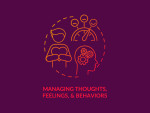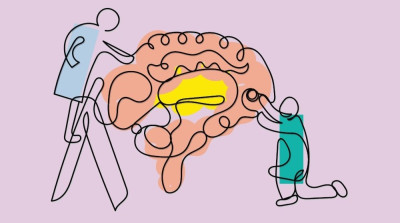Eysenck Personality Inventory (EPI): Free Online Test
New Updates



Take Eysenck’s Personality Inventory Online
Test YourselfThe Eysenck Personality Theory: Understanding Yourself to Unlock Your Full Potential
Have you ever wondered why you react to situations differently than others? The Eysenck personality theory offers fascinating insights into these differences that can help you understand your natural tendencies better. When I recognized my natural tendencies through taking an Eysenck personality test, I was able to grow beyond my limitations and become more confident in leadership roles.
Self-discovery through personality assessment helped me work with my natural traits instead of fighting against them. This blog post explores how understanding the Eysenck three dimensions of personality can help you achieve similar personal growth in your life.
What Is the Eysenck Personality Theory?
The Hans Eysenck personality theory provides a scientific framework for understanding individual differences through three fundamental dimensions: extraversion, neuroticism, and psychoticism. Looking at personality through these three dimensions can help explain why people behave and react so differently in similar situations. Many modern personality tests build upon the foundation created by the Eysenck hierarchical model of personality, which suggests that specific behaviors and responses cluster together to form broader traits.
Unlike many personality theories that focus primarily on observable behaviors, Eysenck's model is based primarily on physiology and genetics. The biological basis of the Eysenck personality theory traits suggests that our temperament is significantly influenced by our inherited genetic makeup rather than just learned characteristics.

The Origins and Development of Eysenck's Theory
The Eysenck personality questionnaire emerged from decades of research beginning in the 1960s by Hans Eysenck and his wife Sybil. The unique approach of the Hans Eysenck personality model emphasized the biological foundations of personality traits, theorizing that measurable differences in neurophysiology and brain functioning underlie observable behavior patterns.
You can find various versions of the Eysenck personality questionnaire online if you're curious about your own profile. Many psychology enthusiasts enjoy taking the Eysenck personality test for free to gain insights into their natural tendencies and behavioral patterns. Looking at the evolution of the assessment over time shows how the Eysenck personality inventory test has been refined to improve its accuracy and usefulness.
Another variant, the Eysenck personality inventory (EPI), contains 57 "yes-no" questions with no repetition of items. This version focuses specifically on measuring the extraversion-introversion and neuroticism-stability dimensions without including the later-added psychoticism scale.
The Three Key Dimensions of Eysenck's Theory
Understanding the Eysenck personality dimensions can provide valuable insights into your own personality and help you leverage your natural strengths. The Eysenck personality test questions are designed to assess where you stand on each of these three fundamental dimensions.
Extraversion-Introversion: Where Do You Get Your Energy?
The extraversion-introversion dimension assesses where individuals fall on a continuum between being outwardly or inwardly oriented. An Eysenck personality test analysis in this dimension can help you understand your social energy patterns and preferred environments.
The Biological Basis of Extraversion
Eysenck's arousal theory of extraversion proposes that this dimension is rooted in differences in cortical arousal, mediated by the brain's reticular formation. According to this theory, there exists an optimal level of cortical arousal for effective functioning, with performance deteriorating as one moves away from this optimal level.
Introverts are characterized by naturally higher resting levels of arousal, making them chronically over-aroused and more sensitive to external stimulation. In contrast, extraverts typically experience lower baseline arousal levels, leaving them chronically under-stimulated and seeking additional external stimulation to reach optimal functioning.
Behavioral Characteristics: Extraverts vs. Introverts
| Extraverts Tend To Be | Introverts Typically Are |
|---|---|
| Outgoing and sociable | More reserved and withdrawn |
| Expressive with their emotions | Comfortable in slower-paced environments |
| Energized by social interaction | In need of recovery time after social interaction |
| Talkative and high on positive affect | More sensitive to external stimulation |
| In need of external stimulation | Better at forming conditioned responses |
Research shows that these differences manifest in various settings, particularly in response to sensory stimulation. For example, under conditions resembling sensory deprivation, extraverts become so uncomfortable that they engage in self-stimulating behaviors like tapping or movement to generate the stimulation they crave.
My Personal Journey with Extraversion-Introversion
As someone with more introverted tendencies, I initially found leadership roles frightening because they often seemed to demand extraverted behaviors. I would feel drained and anxious after presenting to groups or leading meetings, not understanding that this was a natural response based on my personality profile.
By understanding my need for recovery time and preparation before social engagements through the Eysenck personality questionnaire for free results, I was able to structure my leadership approach differently. This awareness helped me schedule quiet preparation time before presentations and recovery time afterward, which dramatically improved my performance and confidence in leadership situations.
Neuroticism-Stability: How Do You Handle Stress?
The neuroticism-stability dimension measures emotional reactivity and susceptibility to psychological distress. Many people discover through taking an Eysenck personality test that their emotional reactivity significantly impacts their stress management capabilities.
The Biological Foundation of Neuroticism
This dimension is theorized to be related to differences in limbic system functioning, mediated by the autonomic nervous system. The limbic system coordinates and governs the activities of the autonomic system in both its sympathetic and parasympathetic branches, affecting physiological responses to emotional stimuli.
Individuals high in neuroticism tend to show excessive autonomic nervous system activation in response to emotional stimuli, leading to more intense emotional reactions, particularly negative ones.

Behavioral Manifestations: Neuroticism vs. Stability
People scoring high on neuroticism tend to be:
- More susceptible to stress and negative emotions
- Prone to anxiety, depression, and other negative emotional states
- More reactive to stressful situations
- Likely to experience mood swings
- More easily overwhelmed by emotions
Those scoring high on stability typically are:
- More resilient to stress
- More emotionally consistent
- Generally positive in outlook
- Less prone to extreme emotional reactions
- Better able to maintain composure under pressure
Interestingly, there appears to be an interaction between neuroticism and introversion in the formation of conditioned emotional responses. Research on the Eysenck personality dimensions suggests that introverts condition the emotional behaviors characteristic of neurosis more readily than do extraverts, potentially explaining the connection between introversion and certain forms of neurotic behavior.
Working with Neuroticism to Build Resilience
My journey with leadership also involved managing higher-than-average neuroticism as revealed by my Eysenck personality inventory test results. Before important presentations, my anxiety would sometimes become overwhelming, making leadership roles particularly challenging for me.
Learning about this dimension through studying the Eysenck personality theory helped me develop specific strategies to manage my emotional reactivity. I began practicing mindfulness techniques to calm my nervous system and implemented structured preparation routines to increase my sense of control in leadership situations.
Psychoticism: Independence and Unconventionality
The psychoticism dimension was the last to be added to the Hans Eysenck personality model and has generated the most controversy among researchers. This dimension measures tendencies toward independence, unconventional thinking, and in extreme cases, antisocial behavior.
Biological Correlates of Psychoticism
Psychoticism appears to be linked with specific hormonal and biochemical factors, including levels of serotonin and dopamine metabolites, as well as sex hormones. Other biological correlates include low conditionability and low levels of monoamine oxidase, while factors like beta-hydroxylase, cortisol, and norepinephrine in cerebrospinal fluid also appear relevant to this dimension.
Behavioral Characteristics Along the Psychoticism Spectrum
High scorers on psychoticism tend to display:
- Impulsivity and sensation-seeking behavior
- Less conformity to social norms
- Greater independence of thought
- Potential for creativity (Eysenck proposed a link between psychoticism and creativity)
- Reduced empathic concern for others
Low scorers on psychoticism generally show:
- Greater agreeableness and conscientiousness
- Higher conformity to social norms
- More conventional thinking
- Stronger concern for others' welfare
- Better impulse control
Critical Perspectives on Psychoticism
The psychoticism dimension has faced criticism from some researchers who suggest it may be too heterogeneous to function as a single trait within the Eysenck hierarchical model of personality. Costa and McCrae, who developed the Five-Factor Model of personality, argue that the components of low psychoticism—agreeableness and conscientiousness—are distinct enough to warrant separate consideration.
Others have suggested that "psychoticism" may be a misnomer, with "psychopathy" or "Impulsive Unsocialized Sensation Seeking" potentially serving as more accurate labels for what the Eysenck personality theory traits are measuring in this dimension.
Taking the Eysenck Personality Test: Measurement and Interpretation
If you're curious about your own personality profile according to Eysenck's theory, you can find the Eysenck personality questionnaire online through various websites. Many people find that taking the Eysenck personality test for free provides valuable insights into their natural tendencies and behavioral patterns.
Understanding Your Scores
The Eysenck personality inventory (EPI) provides scores on three main scales that help you understand your personality profile. The Eysenck personality test analysis typically includes these key measurements:
- E-score (Extraversion): Out of 24 points, measuring where you fall on the extraversion-introversion continuum.
- N-score (Neuroticism): Out of 24 points, measuring emotional stability versus neuroticism.
- Lie score: Out of 9 points, measuring social desirability response bias. Scores of 5 or higher suggest the respondent may be trying to present themselves in an overly positive light rather than answering honestly.
In versions that include psychoticism (like the EPQR), a P-score is also calculated as part of the Eysenck personality test questions assessment. Scores on each dimension are typically plotted on a graph to visualize the individual's personality profile as part of a complete Eysenck personality test analysis.
The positioning of scores relative to normative data helps interpret the significance of an individual's traits, with positions nearer the outside of the circular graph indicating more pronounced personality characteristics according to the Eysenck personality dimensions. It's important to note that the Eysenck tests are relatively simplistic measures, and results should be interpreted cautiously, especially if they contradict an individual's self-understanding or the observations of those who know them well.
Practical Applications of Eysenck's Theory in Daily Life
Understanding your personality profile according to the Hans Eysenck personality theory can have numerous practical applications in your daily life. This knowledge can help you make better decisions about your career, relationships, and personal development strategies.
Personal Development and Self-Understanding
For individuals seeking self-understanding, the Eysenck three dimensions of personality offer a framework for personal growth. This framework allows you to:
- Recognize behavioral patterns and tendencies
- Understand personal strengths and challenges
- Improve interpersonal relationships through better self-awareness
- Make more informed decisions about environments that match your temperament
- Develop strategies to compensate for potential vulnerabilities
Career and Workplace Applications
In organizational settings, understanding personality differences through the Eysenck personality theory traits can help improve workplace dynamics. These insights can help:
- Improve team composition and dynamics
- Enhance communication between different personality types
- Guide career development and job placement
- Create more effective work environments
- Understand patterns in workplace performance and satisfaction
Mental Health and Emotional Well-being
The Eysenck personality questionnaire has proven valuable in research exploring how personality traits correlate with various aspects of mental health. Researchers use these measures to investigate:
- The influence of personality on mental health outcomes
- Individual differences in coping strategies
- Patterns in interpersonal relationships
- Variations in cognitive performance across personality types
- Hereditary aspects of personality traits
Understanding where you fall on dimensions like neuroticism through the Eysenck personality inventory test can help you develop personalized strategies for managing stress. For instance, if you score high on neuroticism, you might benefit from mindfulness practices and cognitive-behavioral techniques to manage anxiety and emotional reactivity.

How Understanding My Personality Helped Me Overcome Leadership Fears
When I first learned that I scored high on introversion and moderate on neuroticism through an Eysenck personality test, many of my struggles with leadership roles suddenly made sense. I wasn't "failing" at leadership—I was trying to lead in a way that contradicted my natural temperament as revealed by my Eysenck personality test analysis.
Instead of forcing myself to become more extraverted, I started to develop leadership strategies that worked with my personality profile. I prepared thoroughly before meetings to reduce anxiety, scheduled recovery time after social events, and focused on one-on-one connections rather than trying to dominate large groups.
By understanding my natural tendencies through the lens of the Eysenck personality dimensions, I was able to:
- Stop comparing myself to naturally extraverted leaders
- Create systems that supported my need for preparation and recovery
- Recognize my strengths in deep thinking and careful analysis
- Build confidence by leading authentically rather than trying to fit someone else's mold
The result was transformative—not because I dramatically changed my personality, but because I learned to work with it rather than against it by applying insights from the Eysenck personality theory.
Is the Eysenck Theory Still Relevant Today?
While newer personality models like the Five-Factor Model (Big Five) have gained popularity, the Hans Eysenck personality model remains valuable for several reasons:
- Its strong biological foundation provides insights into the physiological basis of personality differences.
- The simplicity of the three-dimension model makes it accessible and practical for everyday use.
- Its focus on extraversion and neuroticism aligns with dimensions found in most modern personality theories.
- The extensive research behind the theory offers robust support for many of its claims about personality.
That said, it's worth noting that the psychoticism dimension has faced criticism from researchers who believe it combines traits that might be better understood as separate factors within the Eysenck hierarchical model of personality.
Conclusion: Using the Eysenck Theory for Personal Growth
The Eysenck personality theory offers a scientifically-grounded approach to understanding individual differences through three key dimensions: extraversion-introversion, neuroticism-stability, and psychoticism. The Eysenck personality test questions are designed to measure these three fundamental dimensions to provide insights into your temperament.
The biologically-based theory underlying the Eysenck personality questionnaire suggests that these personality dimensions have physiological foundations, including differences in cortical arousal, limbic system functioning, and biochemical processes. These biological underpinnings help explain why these traits tend to be relatively stable over time and influence a wide range of behaviors according to the Eysenck three dimensions of personality.
While no personality assessment can capture the full complexity of human individuality, the Eysenck personality theory traits offer a valuable framework for understanding core traits that influence behavior and relationships. My personal journey from fearing leadership to embracing my authentic leadership style was greatly aided by understanding my personality through theories like the Eysenck personality inventory (EPI).
By recognizing your natural tendencies through taking an Eysenck personality inventory test and working with them rather than fighting against them, you too can unlock your full potential in all areas of life. Ready to learn more about yourself? Consider taking an Eysenck personality questionnaire for free and using the results as a starting point for self-reflection and growth.
Remember, the goal isn't to change who you are, but to better understand and leverage your natural strengths while developing strategies to manage potential challenges using insights from the Hans Eysenck personality theory. What aspect of your personality would you like to understand better using the Eysenck personality test for free? Share your thoughts in the comments below!
 The 16 Personalities Test: A Guide to Understanding Yourself
The 16 Personalities Test: A Guide to Understanding Yourself